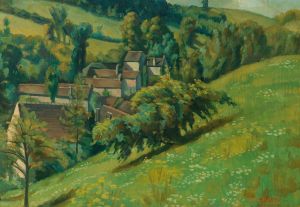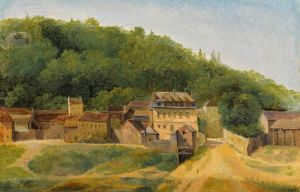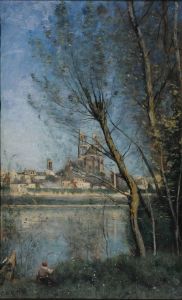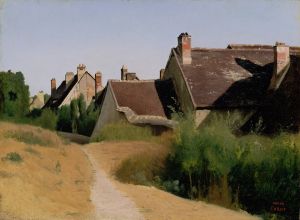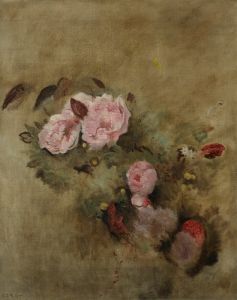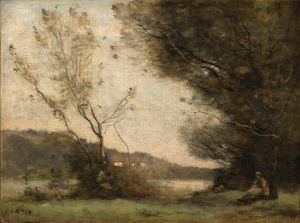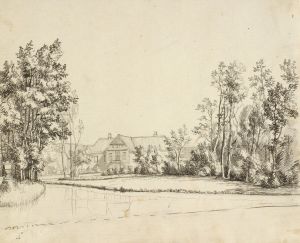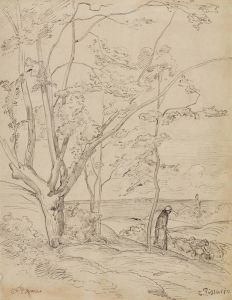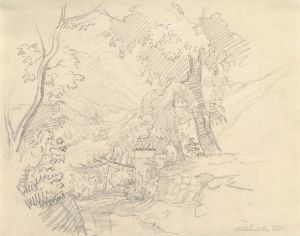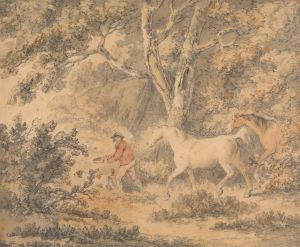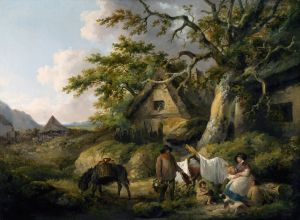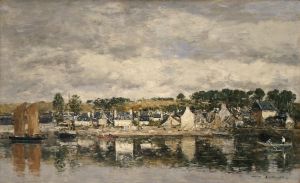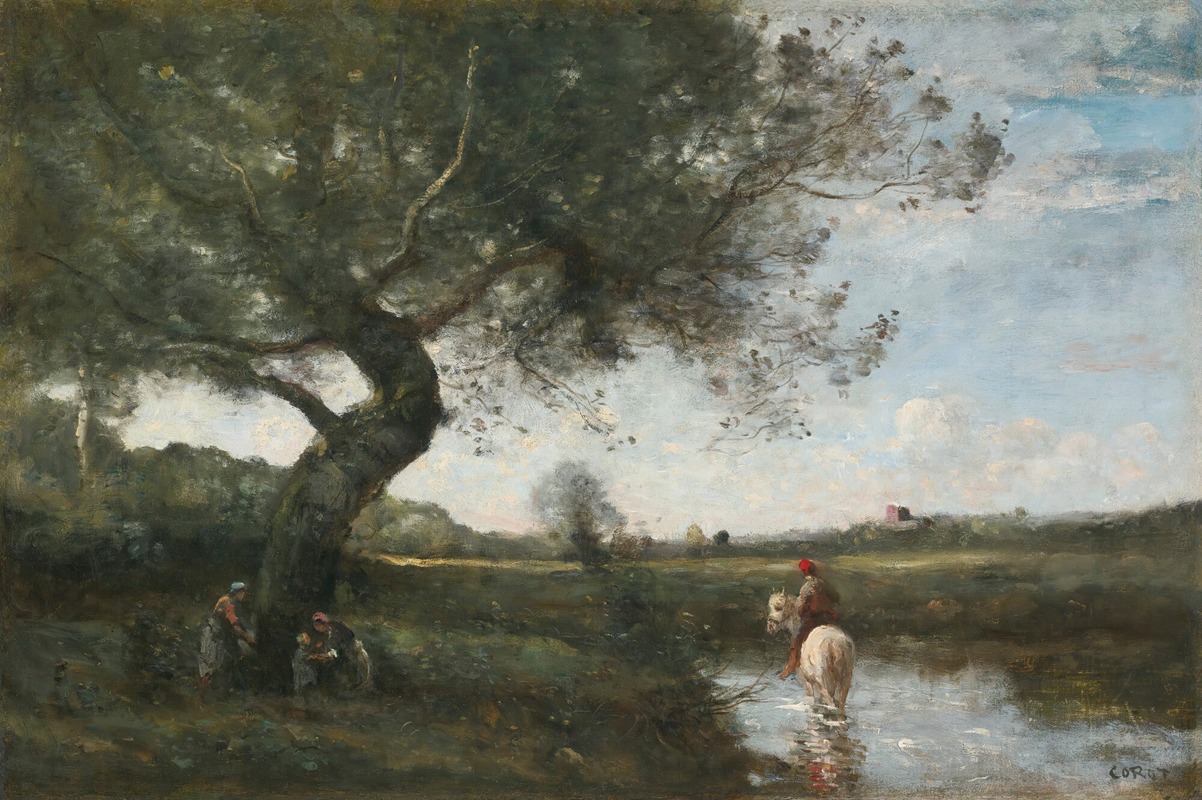
Le Ruisseau Au Cheval Blanc
A hand-painted replica of Jean-Baptiste-Camille Corot’s masterpiece Le Ruisseau Au Cheval Blanc, meticulously crafted by professional artists to capture the true essence of the original. Each piece is created with museum-quality canvas and rare mineral pigments, carefully painted by experienced artists with delicate brushstrokes and rich, layered colors to perfectly recreate the texture of the original artwork. Unlike machine-printed reproductions, this hand-painted version brings the painting to life, infused with the artist’s emotions and skill in every stroke. Whether for personal collection or home decoration, it instantly elevates the artistic atmosphere of any space.
Jean-Baptiste-Camille Corot was a pivotal figure in landscape painting during the 19th century, known for his influential role in the transition from Neoclassicism to Impressionism. One of his notable works is "Le Ruisseau Au Cheval Blanc" (The Brook with the White Horse), which exemplifies his mastery in capturing the serene beauty of nature.
Corot was born in Paris in 1796 and developed a passion for painting landscapes early in his career. He was part of the Barbizon School, a group of artists who sought to break away from the formalism of academic art and instead focus on painting natural scenes directly from life. This approach was revolutionary at the time and laid the groundwork for the Impressionist movement that would follow.
"Le Ruisseau Au Cheval Blanc" is a testament to Corot's skill in rendering the subtle interplay of light and shadow in natural settings. The painting depicts a tranquil brook, with a white horse standing by its banks. Corot's use of soft, muted colors and delicate brushwork creates a sense of calm and harmony, inviting viewers to immerse themselves in the peacefulness of the scene. The composition is balanced, with the horse serving as a focal point that draws the eye into the landscape.
Corot's technique involved plein air painting, where he would paint outdoors to capture the natural light and atmosphere of the scene. This method allowed him to observe the nuances of the landscape and translate them onto the canvas with remarkable fidelity. His ability to convey the mood of a place through his art was highly regarded, and "Le Ruisseau Au Cheval Blanc" is a prime example of this talent.
Throughout his career, Corot was celebrated for his ability to blend realism with a poetic sensibility. His landscapes often evoke a sense of nostalgia and timelessness, qualities that have endeared his work to generations of art lovers. "Le Ruisseau Au Cheval Blanc" reflects these characteristics, showcasing Corot's unique vision and his contribution to the evolution of landscape painting.
Corot's influence extended beyond his own work, as he mentored and inspired many younger artists who would go on to become prominent figures in the Impressionist movement. His emphasis on capturing the essence of a scene, rather than focusing solely on its details, was a significant departure from the more rigid conventions of academic art. This approach resonated with artists like Claude Monet and Camille Pissarro, who admired Corot's ability to convey the fleeting effects of light and atmosphere.
In summary, "Le Ruisseau Au Cheval Blanc" is a quintessential example of Jean-Baptiste-Camille Corot's artistry and his impact on the development of modern landscape painting. The painting embodies the tranquility and beauty of nature, rendered with a sensitivity and skill that have made Corot's work enduringly popular. His legacy as a bridge between traditional and modern art continues to be celebrated, and his paintings remain a source of inspiration for artists and art enthusiasts alike.





